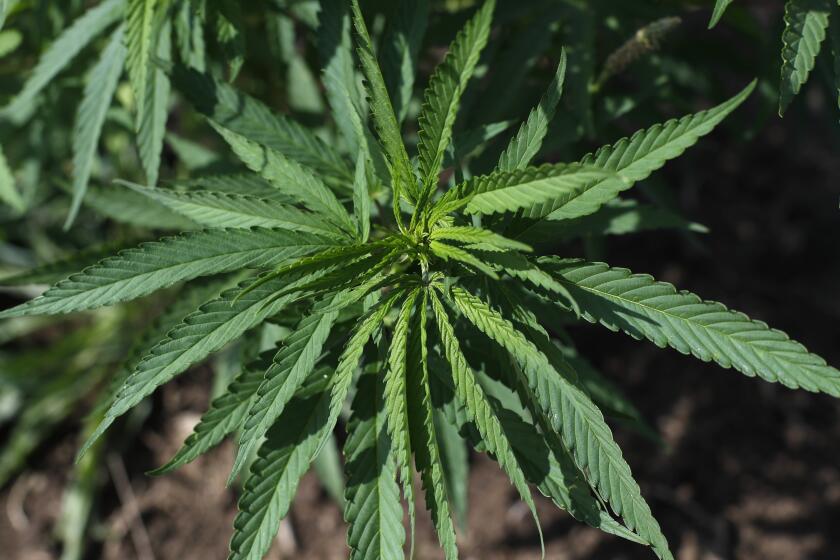Anyone Care What Works? : Drug Plan Has Preventive Measures, but Not Enough for a Dividend
Drug czar William J. Bennett’s national drug control strategy, announced Tuesday night by President Bush, calls for more money for drug treatment and drug prevention.
That’s good. It acknowledges that illegal drugs cannot be kept out of the country by tougher border control and interdiction measures. It concedes that drug eradication efforts overseas can accomplish little in keeping cocaine and heroin out of the United States. And it recognizes that pursuing such efforts can play into the hands of communist guerrillas and anti-American forces in drug-producing countries.
Bennett is not the first federal official to acknowledge these limitations. His willingness to concede these points--even if he continues to throw money in their direction--offers some hope for the future.
But Bennett also wants to go after the casual user, particularly of marijuana, with an intensity not seen in two decades. This aspect of his plan represents a wholesale--and costly--rejection of the lessons of drug history. Seventeen years ago the Shafer Commission, appointed by President Richard M. Nixon, recommended that marijuana be decriminalized. That same year, the Canadian government’s Le Dain Commission did likewise. Ten years later, a panel appointed by the National Academy of Science (the nation’s most prestigious body of scientists) arrived at the same conclusion. All agreed that criminalizing marijuana possession did more harm than good.
Between 60 million and 70 million Americans have used marijuana. Not one has died from an overdose, a striking contrast not just with alcohol but even with aspirin. The Drug Enforcement Administration’s administrative law judge, Francis Young, after extensive hearings on the medicinal value of marijuana, concluded that the drug “is one of the safest therapeutically active substances known to man.”
In the 11 states that decriminalized marijuana during the 1970s, rates of consumption have been indistinguishable from rates in those states that did not decriminalize. A 1988 study by Michael Aldrich and Tod Mikuriya in the Journal of Psychoactive Drugs estimates that California’s decriminalization law, the Moscone Act of 1976, has saved the state half a billion dollars in arrest costs. In the Netherlands, where cannabis was decriminalized in 1976, consumption among young people has actually decreased.
All the evidence suggests that targeting and punishing marijuana users are not merely foolish but costly, counterproductive and immoral. Most marijuana users are not drug addicts but responsible citizens who work in the legal economy, pay taxes and care for their families. Yet they are the ones most likely to test positive in a drug test that has nothing to do with their job performance. And they remain susceptible to arrest by police who presumably have many more valuable things to do. Americans would be better served if Bennett heeded the lessons of science and history. No more benefits from a return to the hysteria of the “Reefer Madness” era.
Bennett also seems to believe that more police and prisons are the principal answers to the drug problems of the inner cities. Here again, he is ignoring the lessons of history. During the past decade, expenditures on drug enforcement have roughly tripled and the number of Americans in prison has doubled. Paying for the construction and maintenance of prison systems now represents the fastest growing item in many state budgets. No other country in the Western world (except South Africa) has a higher percentage of its citizens behind bars. Yet despite this dramatic increase in punitiveness, most aspects of the drug problem in the inner cities are getting worse, not better. Bennett should consider the possibility that the heavy emphasis on criminal justice policies may be responsible.
The experience of the inner cities during the 1980s suggests that tougher penalties and more police will not deter children from pursuing lucrative opportunities in drug dealing. Nor will it deter them from aspiring to emulate the wealthy drug dealers who are their heroes today. Getting tough will not reduce the turf wars between drug-dealing gangs--indeed may increase it. More police will not persuade pregnant women that their crack use is doing grave harm to their babies.
What is needed in the inner cities is a very different two-pronged policy:
--The government needs to undermine the vitality of the illicit drug market and to destroy the distorted incentive structures that lure so many inner city boys and girls into the drug world. Decades of trying to accomplish this with criminal-justice measures have proven the failure of such approaches. The only solution now is a controlled policy of drug legalization. Government must regulate and tax. But it must also make even the most dangerous drugs available to those adults who want them. There is no other way to drive the organized and unorganized dealers from the business.
--Much greater resources, derived from taxation of the drugs that are now illegal and untaxed and from the billions saved by not wasting money on more criminal- justice measures, must be devoted to drug treatment and drug prevention. With the growing involvement of drug users in the spread of AIDS, it is all the more imperative that as many of them as possible be drawn into drug treatment programs.
It is just as important, however, that we plan for the future by investing in preventative measures--not drug education so much as more Head Start programs and prenatal and postnatal care. All of the evidence indicates that a dollar invested in preventive measures such as these returns a far greater dividend than a dollar invested in incarcerating yet another drug dealer or user. Yet because they sound liberal and “welfare-ish,” they are rejected by a public desirous of “tough” measures.
Bennett cannot be blamed entirely for responding to the hysterical cries of a public whipped up to its current frenzy by the media and the politicians. But he is clearly an intelligent man--intelligent enough to distinguish between what works and what doesn’t, and intelligent enough to recognize the costs of pursuing popular and symbolic goals at the expense of decent, sensible, humane and cost-effective solutions. The United States doesn’t need a war against drugs, or a war against drug users, or even a drug czar. Rather, it needs a courageous leader and teacher, one willing to eschew the rhetorical stance and pursue the most sensible policies.
More to Read
Sign up for Essential California
The most important California stories and recommendations in your inbox every morning.
You may occasionally receive promotional content from the Los Angeles Times.










